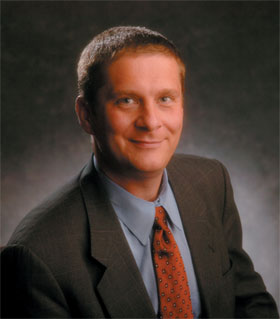
Aerospace is a term used to collectively refer to the atmosphere and outer space. Aerospace activity is very diverse, with a multitude of commercial, industrial, and military applications. Aerospace engineering consists of aeronautics and astronautics. Aerospace organizations research, design, manufacture, operate, maintain, and repair both aircraft and spacecraft.

Science policy is concerned with the allocation of resources for the conduct of science towards the goal of best serving the public interest. Topics include the funding of science, the careers of scientists, and the translation of scientific discoveries into technological innovation to promote commercial product development, competitiveness, economic growth and economic development. Science policy focuses on knowledge production and role of knowledge networks, collaborations, and the complex distributions of expertise, equipment, and know-how. Understanding the processes and organizational context of generating novel and innovative science and engineering ideas is a core concern of science policy. Science policy topics include weapons development, health care and environmental monitoring.

Embry-Riddle Aeronautical University (ERAU) is a private university focused on aviation and aerospace programs. Founded at Lunken Field in Cincinnati, Ohio in 1926, its main campuses are located in Daytona Beach, Florida, and Prescott, Arizona. It is the largest accredited university system specializing in aviation and aerospace. It has numerous online programs and academic programs offered at satellite locations.

Beihang University is a public university in Haidian, Beijing, China. It is affiliated with the Ministry of Industry and Information Technology. According to the Academic Ranking of World Universities, this university is the best university in the world in the field of aerospace engineering.

The Nanjing University of Aeronautics and Astronautics is a public university in Nanjing, Jiangsu, China. It is affiliated with the Ministry of Industry and Information Technology. The university is part of Project 211 and the Double First-Class Construction.
The National Aeronautic Association (NAA) is a federally recognized 501c3 whose mission is to advance and oversee the advancement of the art, sport, and science of aviation and space flight. The NAA achieves this by fostering opportunities to participate fully in aviation activities and promoting public understanding of the importance of aviation and space flight in the United States.

The Air University (AU) (Urdu: جامعہ فضایہ) is a federally chartered public sector research university in Pakistan. Established in 2002, its main campus is located in the capital city of Islamabad, Pakistan. The university has two other functional campuses, Aerospace and Aviation Campus at Kamra and a campus at Multan.

Aeronautical Society of India (AeSI) is the principal Society in India serving the professions in areas of aeronautics, aerospace and aviation. Its stated primary purpose is to "advance the sciences, engineering, technology and management of aerospace, aeronautics and aviation and to foster and promote the professionalism of those engaged in these pursuits".

The Space & Upper Atmosphere Research Commission, commonly referred to as SUPARCO, is the national space agency of Pakistan.
Eugene Edzards Covert was an aeronautics specialist born in Rapid City, South Dakota credited with the world's first practical wind tunnel magnetic suspension system, and was a member of the Rogers Commission. In the 1970s he was the chief scientist of the US Air Force and technical director of the European Office of Aerospace Research and Development.

The Royal Netherlands Aerospace Centre, formerly known as the National Aerospace Laboratory is an aerospace research organization of the Netherlands and is one of its major technological institutes. These institutes perform a large part of the applied research in the Netherlands, each within its own specific field of technology. As an independent non-profit organization, the NLR is the aerospace-knowledge enterprise in the Netherlands and provides technical support to the aerospace sector.
Korea Aerospace University (KAU) is a prominent university located in Goyang, South Korea, specializing in aviation and aerospace studies. Established in 1952, KAU has grown to become a leading institution in the fields of aerospace engineering, aviation management, and air transportation.KAU offers a range of undergraduate, graduate, and doctoral programs, focusing on areas such as aircraft systems, avionics, space engineering, and airport management. The university is known for its strong industry connections, providing students with practical experience through internships, research opportunities, and partnerships with major aerospace companies.KAU also boasts advanced research facilities, including an aircraft maintenance training center, flight simulators, and a dedicated space research lab. The university plays a crucial role in South Korea's aerospace industry, contributing to the development of cutting-edge technologies and training the next generation of aerospace professionals.In addition to its academic excellence, KAU actively participates in international collaborations, hosting exchange programs with universities and institutions worldwide. This global perspective ensures that KAU remains at the forefront of aerospace education and research, preparing its students for careers in a rapidly evolving industry.
Satya Atluri was an Indian-American engineer, educator, researcher and scientist in aerospace engineering, mechanical engineering and computational sciences, who was a Distinguished Professor Emeritus of Aerospace Engineering at the University of California, Irvine. Since 1966, he made fundamental contributions to the development of finite element methods, boundary element methods, Messless Local Petrov-Galerkin (MLPG) methods, Fragile Points Methods, Local Variational Iteration Methods, for general problems of engineering, solid mechanics, fluid dynamics, heat transfer, flexoelectricity, ferromagnetics, gradient and nonlocal theories, nonlinear dynamics, shell theories, micromechanics of materials, structural integrity and damage tolerance, Orbital mechanics, Astrodynamics, digital Twins of Aerospace Systems, etc.

The Mississippi Department of Transportation (MDOT) is the organization in charge of developing and maintaining all state and federal roadways in the U.S. state of Mississippi. In addition to highways, the department also has a limited role in supporting Mississippi's public transportation system, ports and waterways system, aeronautics and railroads. MDOT is headquartered in downtown Jackson.

Sir Arnold Alexander Hall was an English aeronautical engineer, scientist and industrialist.

National Aerospace University – "Kharkiv Aviation Institute", NAU "KhAI" is a university in Kharkiv, Ukraine which specializes in aviation and space engineering. The KhAI was founded in 1930.
The European Aerospace Cluster Partnership (EACP) is a permanent partnership between collaborating European aerospace clusters. The consortium currently comprises 45 aerospace clusters from 18 countries and was initiated by the city of Hamburg in 2009 and co-funded by the European Commission.

Timothy J. Broderick, F.A.C.S., is Professor of Surgery and Biomedical Engineering at the University of Cincinnati, where he has been on the faculty since 2003. He also is Chief of the Division of Gastrointestinal and Endocrine Surgery and is Director of the Advanced Center for Telemedicine and Surgical Innovation (ACTSI). He has flown on the NASA KC-135 parabolic laboratory and dived in the NASA Extreme Environment Mission Operations (NEEMO) program to develop advanced surgical technologies for long duration space flight.
NASA Alumni League is a U.S. organization that supports people that have worked for or at NASA or its predecessor NACA, to stay connected, and to "support the nation's space programs with technical expertise, educational outreach, and financial contributions to STEM organizations." The organization operates across the nation, also with state chapters that allow patrons to network locally. Three goals of NAL in the early 21st century were to "communicate with the NASA community", "to aid the NASA community with its comprehension of engineering and science, and "encourage members to participate in community service and in turn, encourage a dedication to the pursuit of scientific knowledge that benefits all humankind. " NAL is not part of NASA or the U.S. government, it is a non-profit organization founded in 1986.

Guy André Boy is a French and American scientist and engineer, Fellow of the International Council on Systems Engineering (INCOSE), the Air and Space Academy, and the International Academy of Astronautics. He is FlexTech chair holder at CentraleSupélec and ESTIA Institute of Technology. He is also a visiting scholar at ISAE-SUPAERO. He was a university professor and dean (2015–2017) at Florida Institute of Technology (FIT), where he created the Human-Centered Design Institute in 2010. He was senior research scientist at Florida Institute for Human and Machine Cognition (IHMC). He was Chief Scientist for Human-Centered Design at NASA Kennedy Space Center (KSC) from 2010 to 2016. He is known for his work on intelligent assistance, cognitive function analysis, human-centered design (HCD), orchestration of life-critical systems, tangible interactive systems, and human systems integration.













